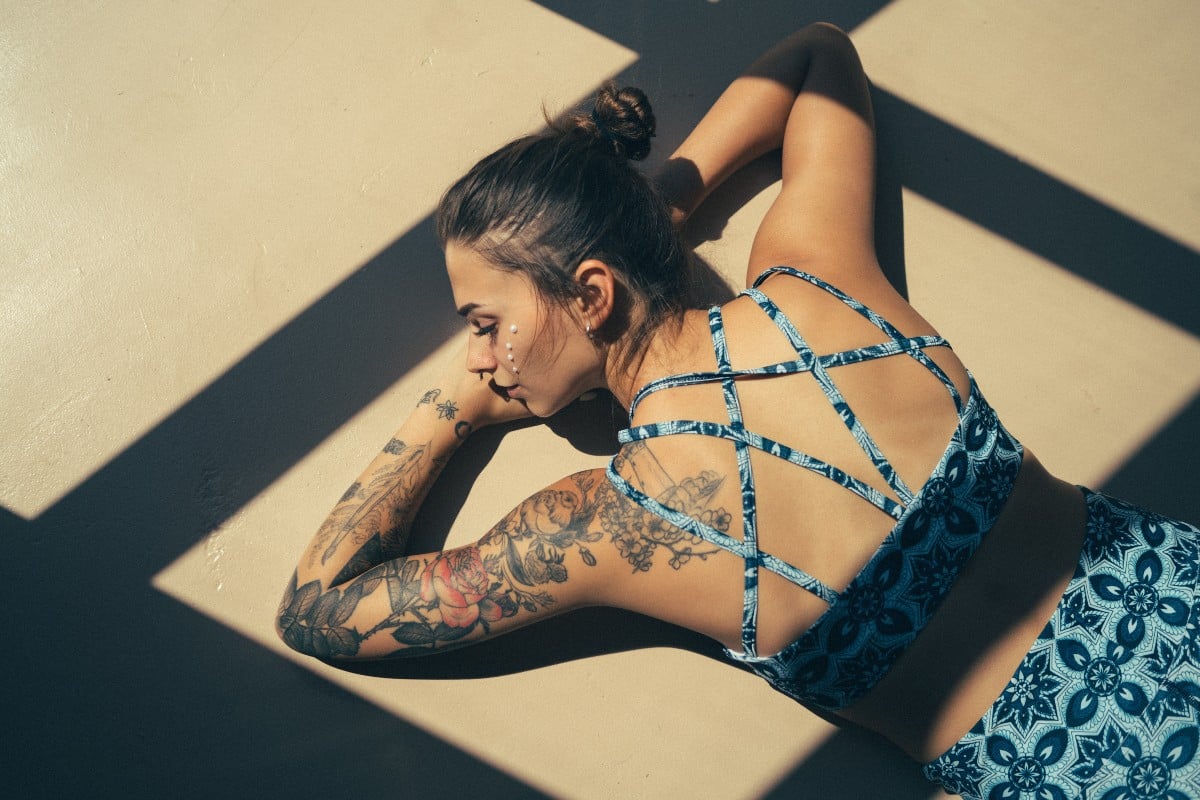IAO and CPD-accredited skin expert.
As the years go by, dark spots, acne marks, and hyperpigmentation become more and more difficult to hide, which is why skin-whitening ingredients have been long-time key players in the skincare world. These ingredients work their magic at a cellular level to eliminate the pigment responsible for dark patches, helping to diminish discoloration and fix uneven skin tone a little bit more every time you use them. If you are struggling with blemishes of any kind, it’s high time you add these skin-lightening ingredients to your beauty routine to bring back that even, luminous complexion. They have all been heavily researched and clinically proven to brighten the skin and fade dark spots.
How skin whitening ingredients work
All the dark patches you see on your skin are mainly caused by an excess of melanin (skin-darkening pigment) due to sun exposure, aging, acne, and free radical damage. Skin whitening ingredients come to the rescue by preventing and reducing the overproduction of this pigment, therefore brightening the skin and reducing discoloration.
Vitamin C, resveratrol, retinol, coenzyme Q10, resorcinol, niacinamide, glutathione, and azelaic acid are some of the best brightening agents in skincare products because they have melanin-inhibiting effects.[1] Exfoliants such as glycolic and lactic acids are also effective because they slough off the old, pigmented cells and bring brighter ones to the surface.
The best skin whitening ingredients
Here’s a complete list of skincare ingredients that can brighten your skin:
- Kojic acid
- Alpha arbutin
- Vitamin C
- Tranexamic acid
- Niacinamide
- Retinoids
- Alpha-hydroxy acids
- Green tea
- Licorice extract
- Mulberry extract
- Dioic acid
- Resveratrol
- Phenylethyl resorcinol
- Glutathione
- Coenzyme Q10
Kojic acid
Kojic acid is a compound derived from mushrooms that inhibits tyrosinase, the main enzyme needed in melanin production.
Do you often notice freckles and sunspots on your skin after spending too much time in the sun? This happens due to the tyrosinase enzyme. This enzyme activates each time your skin comes in contact with UV light. In an attempt to protect skin from sun damage, it triggers excess melanin production, leading to a darker tone. Well, kojic acid reduces skin darkening by limiting the activity of tyrosinase.
According to studies, it has potent depigmenting effects when topically applied and can drastically reduce the amount of pigment that moves to the skin’s surface.[2] Dr. Claire Chang, a board-certified dermatologist of Union Square Laser Dermatology, says, “anyone who wants to improve the appearance of sun-damaged and hyperpigmented skin should use kojic acid.” In addition to brightening the skin, kojic acid is a powerful antioxidant that fights free radicals—a common culprit of dark patches.
Alpha arbutin
Dermatologists have goaded this bearberry plant-derived ingredient as the secret to ultra-bright skin—and for a good reason. Just like kojic acid, alpha arbutin prevents skin discoloration by inhibiting the production of melanin and reducing tyrosinase activity.[3]
More than that, alpha arbutin is relatively safe as it doesn’t kill the pigment-producing cells but gently brightens by blocking them. Besides, you can pair it with other brightening ingredients like vitamin C for maximum effectiveness. So grab your alpha arbutin serum and start on your path to a smoother and blemish-free complexion.
Vitamin C
This water-soluble vitamin is an essential antioxidant needed for protecting skin against environmental aggressors and maintaining it firm and plump. It’s also a powerful skin lightening ingredient because it cuts down melanin production and defends the cells from UV damage, thereby preventing the formation of new dark spots.[4] All in all, vitamin C is a must-have in every skincare routine, and it’s especially a lifesaver if your goal is to achieve a glowy and perfectly even skin tone.
To get the most out of it, pick a vitamin C serum for hyperpigmentation and apply it in the morning after cleansing and toning.
Tranexamic acid
Tranexamic acid is a synthetic amino acid derivative often added in skin-brightening products due to its ability to hinder the transfer of pigment to the skin’s surface and offset free radical damage. According to research, it’s one of the strongest skin brightening ingredients that’s as effective as 3% hydroquinone (a prescription-strength bleaching agent) at treating melasma and post-acne marks.[5] You can use a tranexamic acid serum like SkinCeuticals Discoloration Defense Serum or Good Molecules Discoloration Correcting Serum to keep dark spots at bay.
Niacinamide
Also known as vitamin B3, niacinamide is a versatile ingredient that can fight most of your skin woes, including age spots, blemishes, and sun damage. This water-soluble vitamin builds proteins and lipids in the skin to strengthen it while keeping it hydrated and firm. Moreover, niacinamide lightens the skin and lessens discoloration by blocking the transfer of melanin to the surface cells. Specifically, it blocks the cells that synthesize, store, and transport melanin from interacting with your skin cells.[6] Plus, it’s a potent antioxidant known to reduce the effects of sun-induced damage, hence fewer chances of hyperpigmentation.
Retinoids
Retinoids, like retinol and retinaldehyde, are vitamin A derivatives known as the most powerful molecules in the dermatological field. Apart from stimulating cell renewal and increasing collagen levels, retinoids are also potent skin whitening agents since they hinder the activity of melanocytes (melanin-producing cells). For the record, studies found that topical application of retinoids can reduce pigmentation by 60% and contribute to a proper distribution of pigment in the cells.[7]
Alpha-hydroxy acids
You can also even out your skin tone by exfoliating your skin once or twice weekly with alpha-hydroxy acids (AHAs). AHAs, such as glycolic and lactic acids, are chemical exfoliants with brightening effects that remove the top layer of the skin. This way, they eliminate the cells affected by excess melanin and encourage fresher ones to come to the surface. As a result of exfoliation, your skin will get brighter, smoother, and more vibrant.
Green tea
Green tea is the least processed type of tea and your best option if you’re looking for a natural skin lightening ingredient. It was found that EGCG and other catechins present in green tea can depigment the skin and are particularly effective at preventing excess melanin production.[8] Besides, green tea is rich in antioxidants that increase the skin’s defense against oxidative stress and free radicals. To reap all these benefits and boost your skin brightness, you can either sip a cup of green tea every day or use green tea skincare products as a part of your beauty routine.
Licorice extract
Licorice extract contains a particular compound, glabridin, that can reduce the activity of various enzymes responsible for melanin production. Studies found that licorice extract is a better tyrosinase inhibitor than kojic acid and can lighten the skin in as little as four weeks.[9] More than that, licorice extract is a powerful antioxidant that decreases reactive oxygen species, which causes premature aging, dark spots, and skin discoloration.
Mulberry extract
Mulberry extract is rich in phenol, vitamins, arbutin, and tannin, all compounds that act as antioxidants and tyrosinase inhibitors in the formation of pigmented spots in the skin.[10] This natural skin brightener is often found in serums and creams that target hyperpigmentation, so it should be fairly easy to find a product that contains it.
Dioic acid
With a chemical structure similar to azelaic acid, dioic acid has the ability to brighten the skin by reducing the amount of tyrosinase produced and limiting the transfer of melanin in cells. Better still, research has shown that using 1% dioic acid twice daily is just as effective as using 2% hydroquinone and has fewer side effects.[11] That means it’s well tolerated by most people, including those with sensitive skin.
Resveratrol
Resveratrol is a naturally-occurring antioxidant present in berries, grapes, and peanuts. Apart from fighting free radicals, resveratrol stimulates collagen production and has anti-inflammatory properties, which means it can effectively recover the skin from UV exposure. Plus, resveratrol improves hyperpigmentation and blotchy skin by inhibiting tyrosinase enzyme, being touted by dermatologists and researchers as one of the best antioxidants for skin whitening.[12] Whether you drink a glass of red wine every other day or apply a resveratrol-rich serum on your face, this antioxidant will be your ticket to a radiant complexion.
Phenylethyl resorcinol
Phenylethyl resorcinol is a white crystalline phenolic compound derived from pine bark. When topically applied, it reduces melanin content in cells by binding to tyrosinase and blocking the enzyme activity responsible for pigment production.[13] You can find resorcinol and its derivatives in all types of skincare products, including toners, creams, and serums.
Glutathione
This naturally occurring compound is present in every cell in the body and is often called the mother of antioxidants. It can be taken orally as a supplement or applied topically, both of which can reduce UV damage, lessen inflammations, hinder tyrosinase activity, and deliver long-lasting effects for skin whitening. For the record, studies found that skincare products containing 0.1%, 0.5%, and 2% glutathione are very effective in diminishing hyperpigmentation and improving overall skin tone when used twice daily for at least one month.[14]
Coenzyme Q10
Coenzyme Q10 is an essential antioxidant produced naturally by the body with the role of fighting free radicals and sending messages to cells to “behave,” aka to grow and repair. While it comes with a long list of benefits, including inducing collagen and elastin production, restoring skin, and strengthening the protective barrier, CoQ10 is also a powerful tyrosinase inhibitor. It was found in multiple studies to have depigmenting and whitening effects upon dark spots, post-acne marks, and other forms of discoloration.[15]
The bottom line
Adding these skin whitening ingredients to your daily skincare routine is a great way to tackle dark spots and give your skin a boost of radiance. Ideally, use products that contain a blend of these ingredients and stick to them for at least three months. Here’s a good list of serums for correcting dark spots that are made with a cocktail of brightening agents to deliver A-class results. Remember that consistency is key, and dark spots simply don’t vanish overnight. So make sure to apply the products regularly and in combination with a healthy diet, plenty of hydration, and daily sunscreen.
Footnotes
Women’s Concepts uses reliable sources, including dermatologists’ insights, clinical trials, and scientific journals, to find accurate information and support all the facts shared in our articles. All statements and claims have clear and legit references. Read our editorial policy to learn more about our sources of information, our process of researching and fact-checking the content, and how our team strives to keep all articles updated, completed, and trustworthy.
- Addor FAS. Antioxidants in dermatology. An Bras Dermatol. 2017 May-Jun;92(3):356-362. doi: 10.1590/abd1806-4841.20175697. PMID: 29186248; PMCID: PMC5514576.
- Lajis AF, Hamid M, Ariff AB. Depigmenting effect of Kojic acid esters in hyperpigmented B16F1 melanoma cells. J Biomed Biotechnol. 2012;2012:952452. doi: 10.1155/2012/952452. Epub 2012 Oct 2. PMID: 23091364; PMCID: PMC3468271.
- Boo YC. Arbutin as a Skin Depigmenting Agent with Antimelanogenic and Antioxidant Properties. Antioxidants (Basel). 2021 Jul 15;10(7):1129. doi: 10.3390/antiox10071129. PMID: 34356362; PMCID: PMC8301119.
- Sanadi RM, Deshmukh RS. The effect of Vitamin C on melanin pigmentation – A systematic review. J Oral Maxillofac Pathol. 2020 May-Aug;24(2):374-382. doi: 10.4103/jomfp.JOMFP_207_20. Epub 2020 Sep 9. PMID: 33456250; PMCID: PMC7802860.
- Ebrahimi B, Naeini FF. Topical tranexamic acid as a promising treatment for melasma. J Res Med Sci. 2014 Aug;19(8):753-7. PMID: 25422661; PMCID: PMC4235096.
- Hakozaki T, Minwalla L, Zhuang J, Chhoa M, Matsubara A, Miyamoto K, Greatens A, Hillebrand GG, Bissett DL, Boissy RE. The effect of niacinamide on reducing cutaneous pigmentation and suppression of melanosome transfer. Br J Dermatol. 2002 Jul;147(1):20-31. doi: 10.1046/j.1365-2133.2002.04834.x. PMID: 12100180.
- Zasada M, Budzisz E. Retinoids: active molecules influencing skin structure formation in cosmetic and dermatological treatments. Postepy Dermatol Alergol. 2019 Aug;36(4):392-397. doi: 10.5114/ada.2019.87443. Epub 2019 Aug 30. PMID: 31616211; PMCID: PMC6791161.
- Sato K, Toriyama M. Depigmenting effect of catechins. Molecules. 2009 Nov 4;14(11):4425-32. doi: 10.3390/molecules14114425. PMID: 19924076; PMCID: PMC6255032.
- Yokota T, Nishio H, Kubota Y, Mizoguchi M. The inhibitory effect of glabridin from licorice extracts on melanogenesis and inflammation. Pigment Cell Res. 1998 Dec;11(6):355-61. doi: 10.1111/j.1600-0749.1998.tb00494.x. PMID: 9870547.
- Gug, Kyungmee. (2012). Physiological and Whitening Effects of Morus alba Extracts. Journal of the Chosun Natural Science. 5. 10.13160/ricns.2012.5.1.046.
- Tirado-Sánchez A, Santamaría-Román A, Ponce-Olivera RM. Efficacy of dioic acid compared with hydroquinone in the treatment of melasma. Int J Dermatol. 2009 Aug;48(8):893-5. doi: 10.1111/j.1365-4632.2009.04105.x. PMID: 19659872.
- Boo YC. Human Skin Lightening Efficacy of Resveratrol and Its Analogs: From in Vitro Studies to Cosmetic Applications. Antioxidants (Basel). 2019 Aug 22;8(9):332. doi: 10.3390/antiox8090332. PMID: 31443469; PMCID: PMC6770230.
- Kim BS, Na YG, Choi JH, Kim I, Lee E, Kim SY, Lee JY, Cho CW. The Improvement of Skin Whitening of Phenylethyl Resorcinol by Nanostructured Lipid Carriers. Nanomaterials (Basel). 2017 Aug 28;7(9):241. doi: 10.3390/nano7090241. PMID: 28846658; PMCID: PMC5618352.
- Weschawalit S, Thongthip S, Phutrakool P, Asawanonda P. Glutathione and its antiaging and antimelanogenic effects. Clin Cosmet Investig Dermatol. 2017 Apr 27;10:147-153. doi: 10.2147/CCID.S128339. PMID: 28490897; PMCID: PMC5413479.
- Zhang M, Dang L, Guo F, Wang X, Zhao W, Zhao R. Coenzyme Q(10) enhances dermal elastin expression, inhibits IL-1α production and melanin synthesis in vitro. Int J Cosmet Sci. 2012 Jun;34(3):273-9. doi: 10.1111/j.1468-2494.2012.00713.x. Epub 2012 Mar 24. PMID: 22339577.






